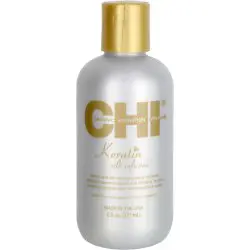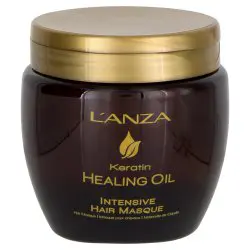2025 (32)
Ingredient: Keratin
Those who use a shampoo & conditioner or hair mask's containing keratin on their hair report that their hair is smoother and easier to manage as a result. The effects vary greatly depending on whether your hair is healthy to begin with, what the natural thickness of your hair is, and what kind of keratin treatment you use. Keratin works by smoothing down the cells that overlap to form your hair strands. The layers of cells, called the hair cuticle, absorb the keratin, resulting in hair that looks full and glossy. Keratin also claims to make curly hair less frizzy, easier to style, and straighter in appearance. Keratin can also strengthen your hair and make it look healthier. So...is it true? Is there science to back it up?
The Science
Many types of protein hydrolysates (keratin) from plants and animals have been used in hair and personal care such as keratin hydrolysates obtained from nails, horns and wool. Most of these hydrolysates are obtained by chemical hydrolysis and hydrothermal methods. A newer method, using "enzymatic hydrolysis" and feathers has, according to a study published (2013) in the US National Library of Medicine: "the enzymatic method to produce keratin peptides for hair care products is an attractive and eco-friendly method with a great potential in the cosmetic industry." In reporting their test results, they went on to say, "A mild shampoo and a rinse off conditioner were formulated with the enzymatic hydrolysate and applied to hair fibers to evaluate the hydration, with and without heat. The hydration was more efficient with heat, suggesting a more complete incorporation of hydrolysates into the fibers. Scanning Electron Microscopy showed deposits of organic matter in the junction of the cuticles that probably collaborates to the sealing of the cuticles, increasing the brightness and softness."
So...is it true? Is there science to back it up? Yes!

 write a review
write a review

 write a review
write a review
